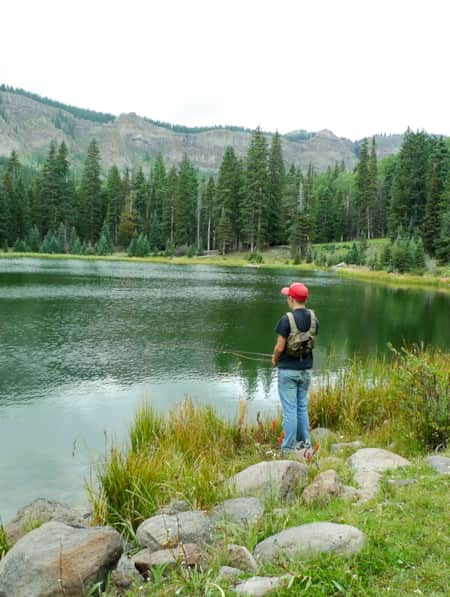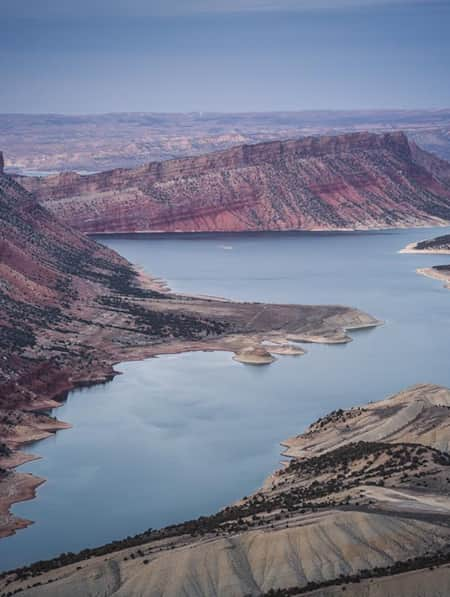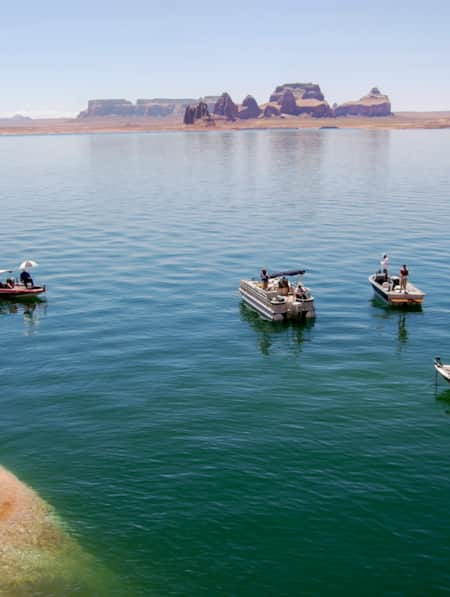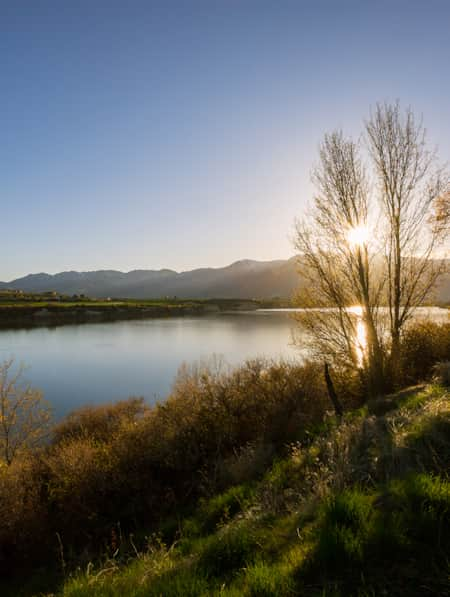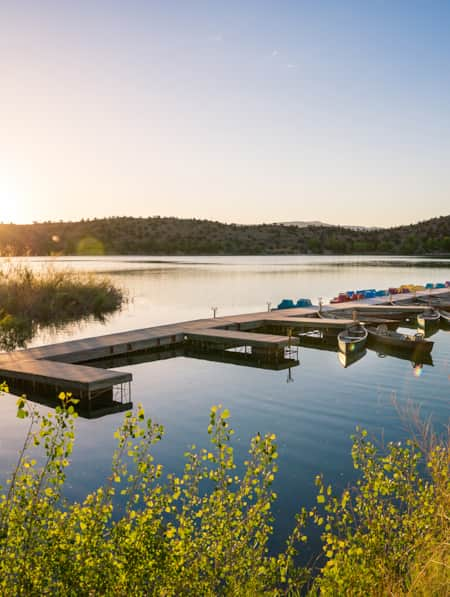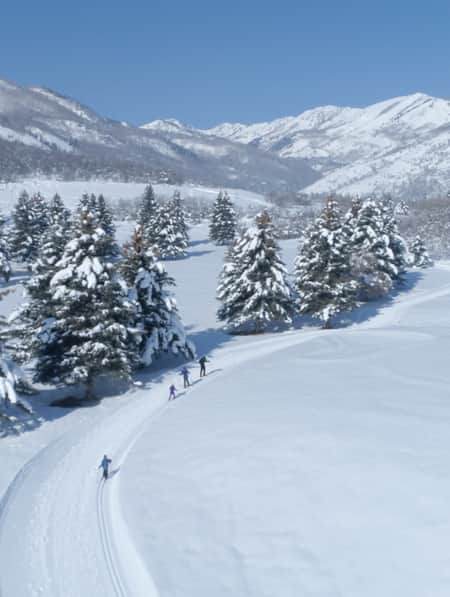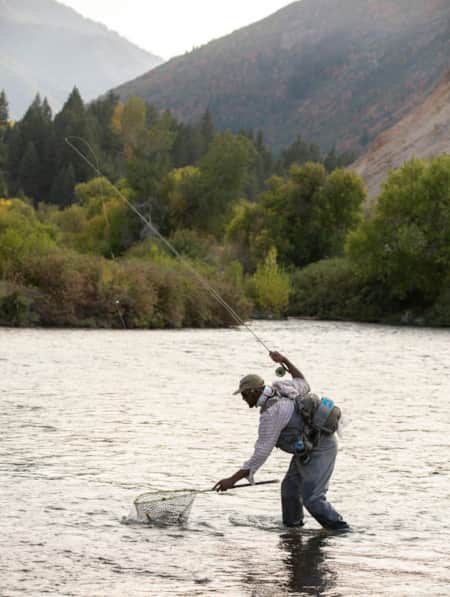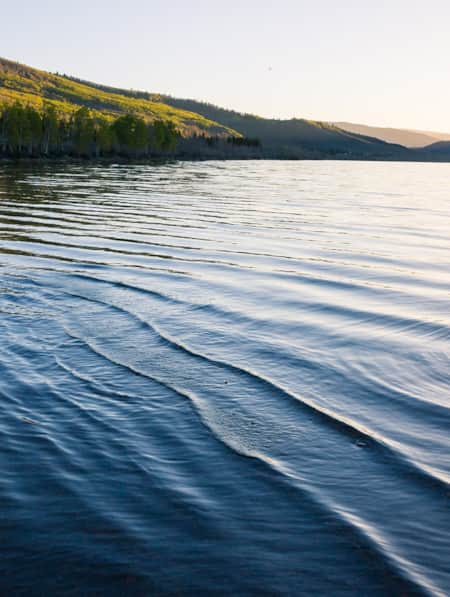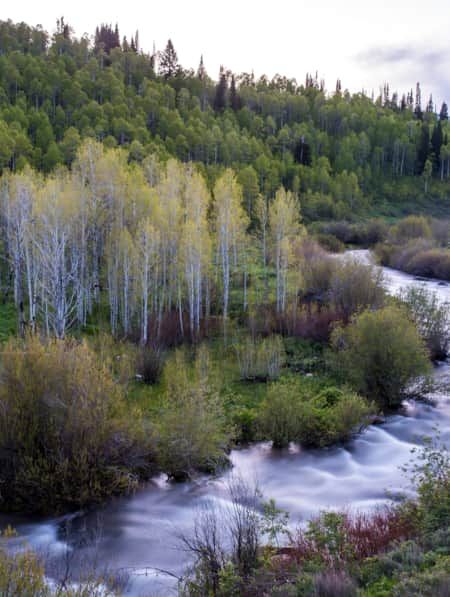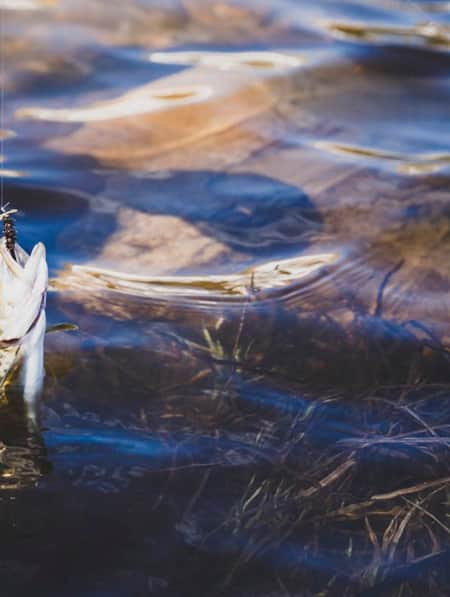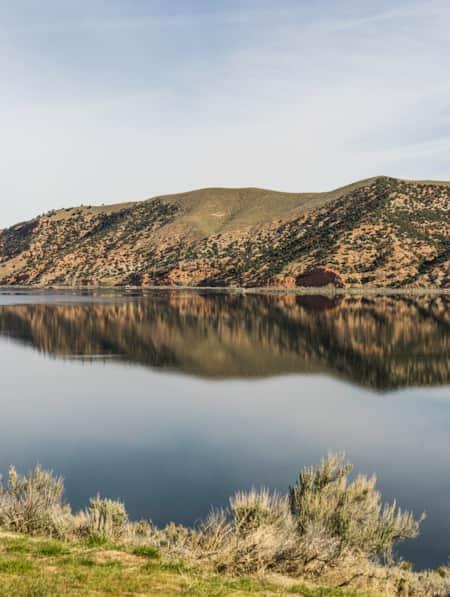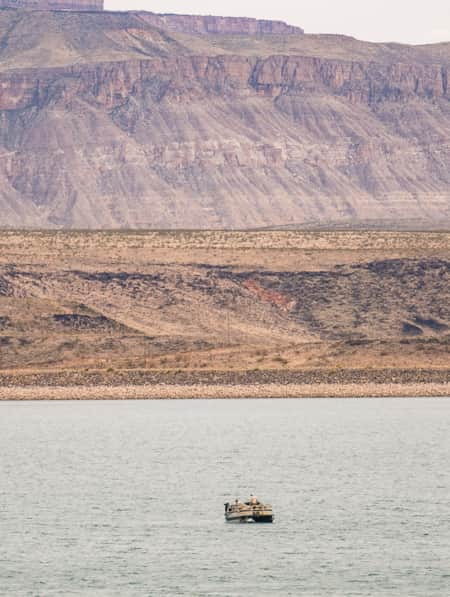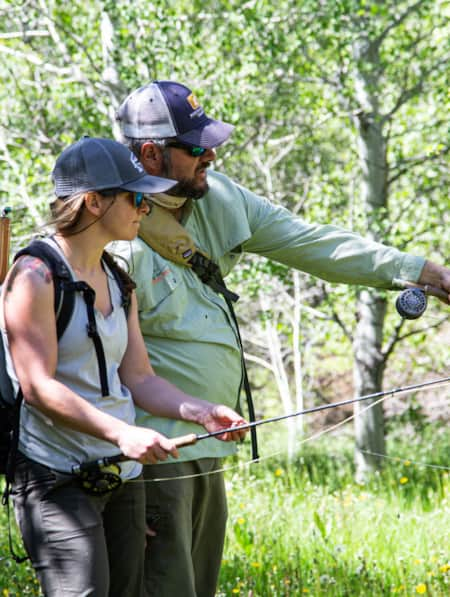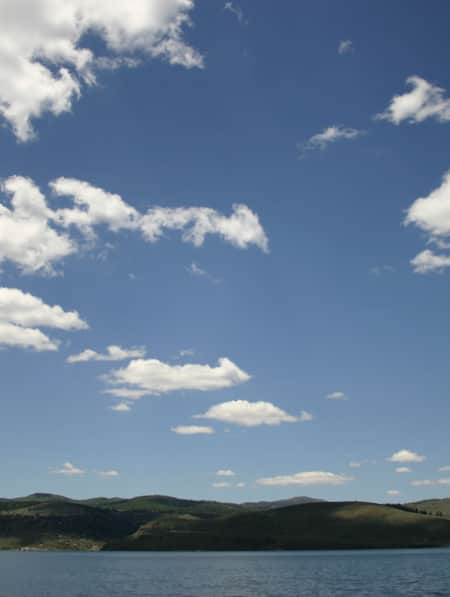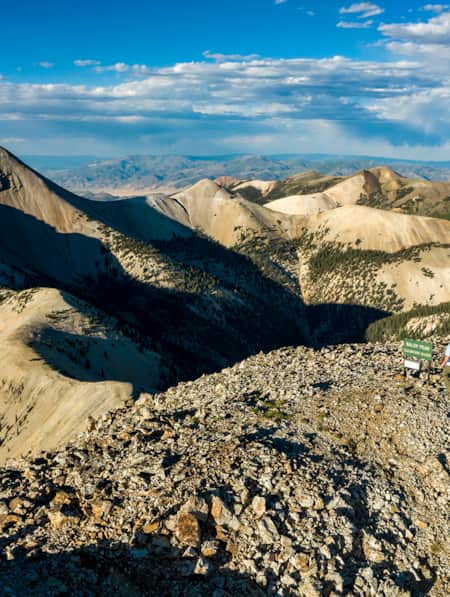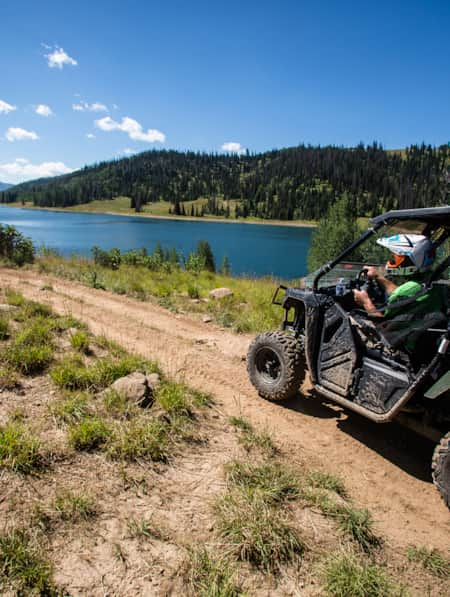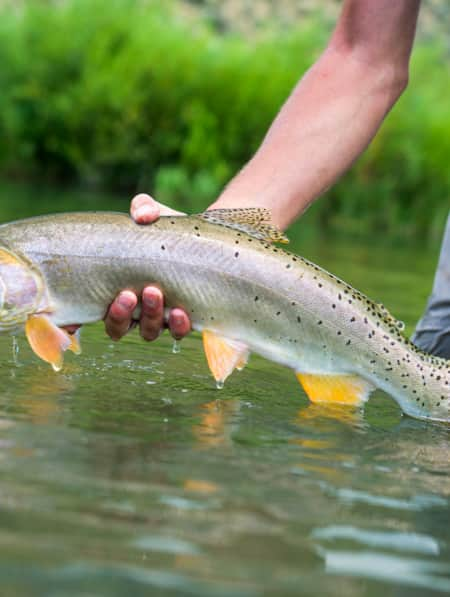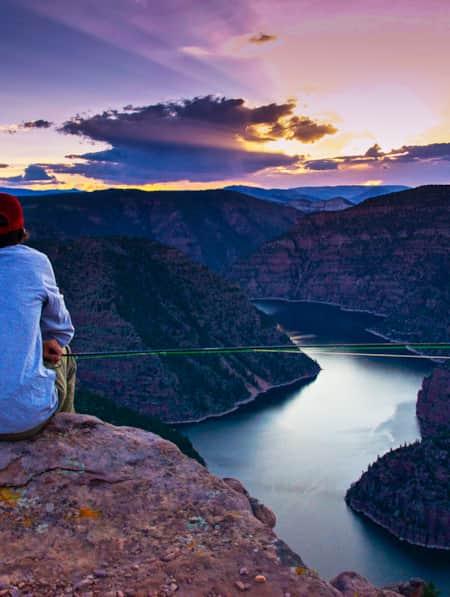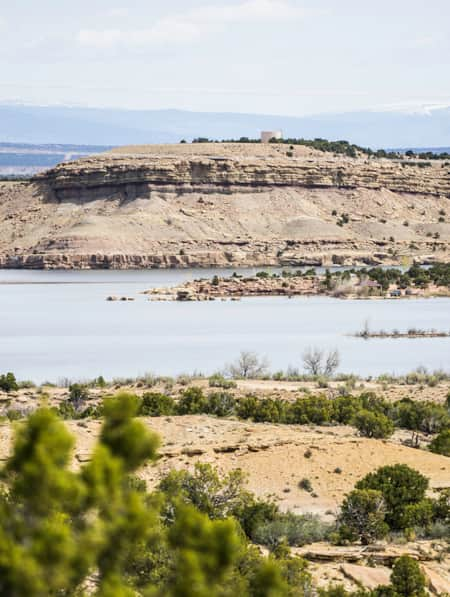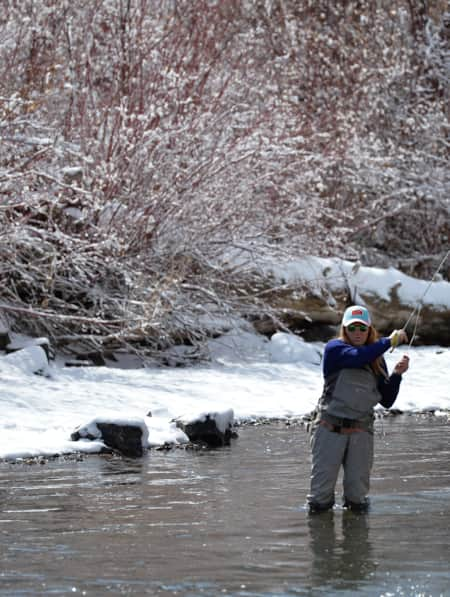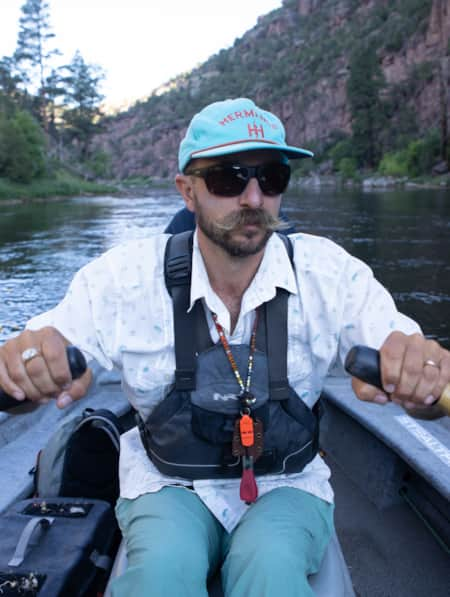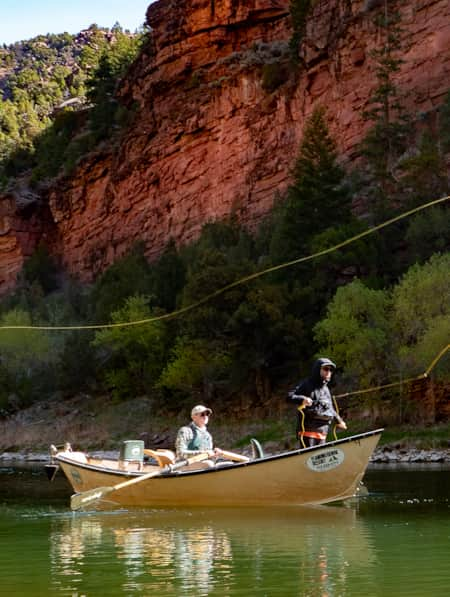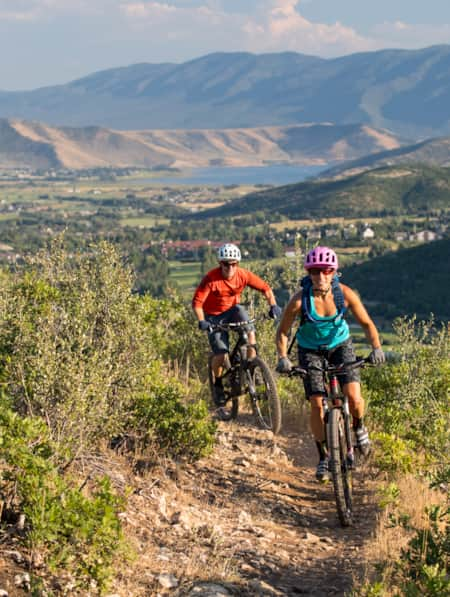- Home
- Things To Do
- Fishing
- Fishing Starvation State Park
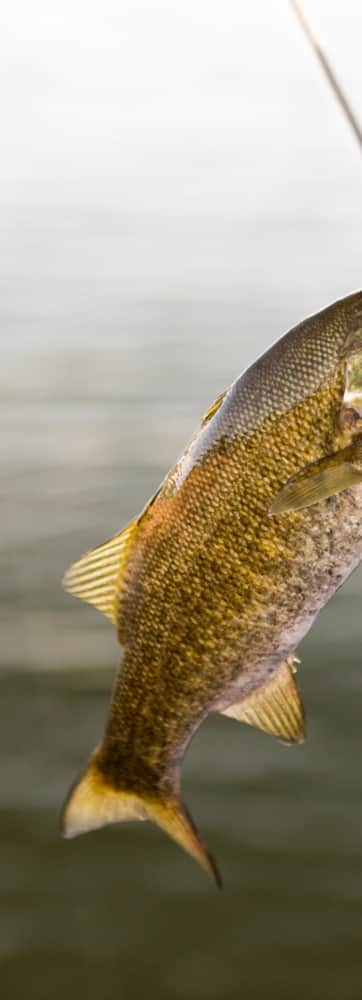
Fishing Starvation State Park
- Weather: Sunny, 36F
Don’t let the name scare you away. Starvation Reservoir has plenty of walleye, bass, and even trout, to keep your belly full. Enjoy your freshly caught dinner along the lake’s shores beneath some of the best sunsets in Utah.
There is a bridge along U.S. Highway 40 when driving between Heber City and Vernal that takes you over Starvation Reservoir. As you pass above, you can’t help but notice the stunningly blue waters of the lake framed in the unique canyon country of northeastern Utah. And if you are an angler, then all thoughts turn to, how can I get out on that water and is there anything to catch?
The 3,495-surface acre Starvation Reservoir is part of Starvation State Park. While there are a few different legends regarding the origin of the park’s (and reservoir’s) name, the one that stands out as the most likely is based on the harrowing lives that the pioneers faced in the area when settling. Harsh winters and storms made farming a challenge and the region’s early residents often found themselves lacking for food. It’s not surprising they nicknamed the area “Starvation.”
Starvation's Bounty
Luckily for anglers looking to cast their lines and fill their bellies, this name is no longer befitting of the fishing opportunities found here. Walleye, perch, smallmouth bass, brown trout, rainbow trout, and even cutthroat trout can be hauled from the waters of the reservoir.
Most anglers focus on the walleye and smallmouth bass, and rightfully so. Walleye up to 15 pounds are not uncommon here. The state record catch-and-release walleye — 31.5 inches — was caught here in 2002, and was very close to the 31.75-inch caught-and-kept record, that tipped the scales at 15 pounds 9 ounces.
Considered by many to be the best-tasting fish around, walleyes this size guarantee a solid meal or two or three with leftovers. Fishing for walleye is typically best if you are trolling with bottom bouncers down to about 25 feet.
There are many other small fish for the taking as well. Yellow perch are not far behind walleye on the scrumptious scale, although it takes a lot more of them to feed a family. Good thing they can be caught in abundance here. The smallmouth bass in the lake are as feisty as anywhere, and there are some dandies among those frequenting these waters.
Trout can also be found at the lake. Big browns are more common in Starvation than many other reservoirs in Utah. And, the Utah Division of Wildlife Resources plants rainbow trout to provide trout anglers a reliable species to land from shore or through the ice. Fishing for rainbows can be off the charts at times, but typically best in the spring, fall, and winter.
Trolling with pop gear and worms is a common practice at the reservoir, but don’t be surprised to pick up any of the other species while doing it. Traditional trout baits work well from shore when the fishing is good.
Stay the Night
In addition to the great fishing and beautiful waters, the landscape that surrounds you while fishing is breathtaking. The sunrises and sunsets at Starvation State Park are some of the best in Utah. And you’ll often find yourself glancing to the north to take in the views of the Uintas. It’s hard not to, until your line goes tight.
There are six campgrounds at Starvation State Park, two developed — Mountainview and Beach — and four primitive — Knight Hollow, Juniper Point, Indian Bay and Rabbit Gulch. The park also has a 4-lane cement boat ramp and courtesy docks.
Starvation is two hours, or 118 miles east of Salt Lake City, four miles northwest of the town of Duchesne, and about 90 minutes from Dinosaur National Monument.
Planning Resources
- Buy a Utah fishing license
- Fishing regulations in Utah
Learn more about fishing in Utah
Discover More
-

A Local’s Guide to Logan: Northern Utah’s Outdoor Adventure College Town
Written By Arianna Rees
3 minute read
Logan is teeming with some of the best arts, food and outdoor adventure opportunities in the state. Whether you’re passing through or just looking for new places to explore, here are some of the best ways to experience Logan.
-

Alpine Fishing Above the Red Rock Landscapes of Southern Utah
Written By Visit Utah
2 minute read
Sitting just outside of Capitol Reef National Park, this 11,000-foot peak offers views of the surrounding red canyons and desert-like region. In contrast, Boulder Mountain is heavily forested and home to more than 80 lakes, ponds, and reservoirs. With an average rainfall multiple inches more than the lower regions, the area makes for some surprisingly good fishing.
-

An Old Favorite Fishing Hole at the Flaming Gorge Reservoir
Written By Dan Potts
6 minute read
Visit Utah columnist Dan Potts takes us to his "secret" fishing hole on Utah's Flaming Gorge Reservoir, one of the world's most diverse fisheries set among the brilliant red rock walls of Red Canyon in the easternmost corner of the state. Along the way, Dan takes us through some of his favorite landscapes on the drive to and from Salt Lake City.
-

Angling Secrets: How and Where to Catch Fish on Lake Powell
Written By Visit Utah
3 minute read
Read expect advice on when and where in Lake Powell to get the prized fish you're chasing.
-

Bear Lake Monster Winterfest
Written By Ben Whisenant
8 minute read
It all started decades ago with the “Cisco Disco” and has grown to include a polar plunge, chili cookoff and winter festival known as the Bear Lake Monster Winterfest.
-

Discovering the Quiet Beauty of Hyrum Lake State Park
Written By Matcha
4 minute read
Spend some time at Hyrum Reservoir and you’ll discover that crisp clear water and a spot on the grass are all you really need for a relaxing getaway. Throw in pristine mountain views and a shady spot to set up camp and consider your summer vacation plans as good as done.
-

Enjoying the Simple Pleasures of Lake Life on Palisade Reservoir
Written By Visit Utah
4 minute read
Utah’s beautiful Palisade Reservoir is an oasis of serene water in the central part of the state, a perfect getaway for paddling, fishing, swimming and camping.
-

Find a Winter Refresh in a Utah State Park
Written By Rosie Gochnour Serago
4 minute read
The best Utah state parks will entice you with ice fishing, white sand and snow-dusted scenery. Take a winter break to refresh with a visit to a few of these places.
-

Finding Solitude on the Provo River
Written By Matcha
Get expert advice on Provo River fishing, recreation and relaxation. Add the Provo River to your next Utah itinerary!
-

Fishing Fish Lake
Written By Matcha
5 minute read
The largest natural mountain lake in Utah, Fish Lake sits at more than 8,800 feet of elevation, which makes for pleasant weather all summer long. Located near Richfield, Utah, the lake has everything you need for a relaxing summer getaway.
-

Fishing Northern Utah's Logan River
Written By Matcha
Why do serious fly fishers flock to Northern Utah’s Logan River? Fishing spots with rainbow and brown trout in our freestone dream streams. Plan your adventure!
-

Fly Fishing the Uinta Mountains
Written By Matcha
The Uinta Mountains are one of Utah’s top fly fishing destinations. Learn where to go and how to land that trophy trout, then plan your own fly fishing getaway.
-

Get to Know Echo State Park
Written By Matcha
4 minute read
Situated at 5,560 feet above sea level, just north of Park City, lies Echo State Park. Watersports are king here, and whether you kayak, paddleboard, or boat, it’s a perfect place to get out on the water.
-

How to Have the Perfect Weekend on the Water at Quail Creek State Park
Written By Matcha
4 minute read
Just 15 miles north of St. George and even closer to the town of Hurricane, Quail Creek State Park offers warm water and mild weather year round. There’s plenty to do out on the water, and the gorgeous setting is sure to impress.
-

In Search of the Yellowstone Cutthroat
Written By Sandra Salvas
7 minute read
Fishing for what counts in Utah’s remote Raft River Mountains.
-

Panguitch Lake's Literal "Big Fish"
Written By Matcha
People have been traveling to fish at Panguitch Lake for a long time. Legend has it this popular high mountain fishery in Southern Utah was named by the Paiute people who once frequented the area and it translates to mean “big fish.”
-

Ramble On: An Insider's Guide to Beaver County
Written By VistaWorks
5 minute read
Ramblers, also known as Beaver County, is an outdoor playground. From winter to summer, check out the top 10 things to see and do in Ramblers.
-

Riding the Arapeen OHV Trail of Central Utah
Written By Ben Whisenant
6 minute read
Looking for the best off-roading trails in Utah? You have to try the Arapeen OHV Trail, featuring hundreds of miles of scenic backcountry trails in Central Utah. Start planning now!
-

Strawberry Reservoir: Ripe for All Kinds of Anglers
Written By Matcha
With trophy-sized cutthroats and rainbows, large populations of aquatic insects and ample wade fishing opportunities, Strawberry Reservoir — affectionately called "the Berry" — really does have something for every angler’s tastes.
-

The Most Scenic Trophy Trout Destination
Written By Matcha
Flaming Gorge, Utah is one of the world’s best places to fish for trout. Awe-inspiring scenery and abundant fish attract anglers from all over. Check it out!
-

The Story of Starvation Reservoir
Written By Matcha
Sprawling waters and local legends at Fred Hayes State Park at Starvation.
-

The Story of Utah Women Flyfishers
Written By Brett Prettyman
4 minute read
Get to know Heidi Lewis, founder of Utah Women Flyfishers. More than 300 women meet monthly to tie flies, practice casting at the park, plan trips and more.
-

The Wayward Path of a Utah Fly-Fishing Guide Led Straight to the Green River
Written By Brett Prettyman
5 minute read
Colby Crossland isn’t quite sure how he ended up a guide on one of the country’s best fly-fishing destinations, but he knows the perks are worth the tangles.
-

Where To Fish in Utah This Spring
3 minute read
We've got your Northern and Southern Utah recommendations for where to fish this spring.
-

Wild Heber: Close-to-Home Adventure
Written By Kristen Pope
8 minute read
Just 45 minutes from Salt Lake City, Heber Valley’s state parks and national forest lands offer a world of adventure. Hike, bike, camp, kayak, watch wildlife and reel in blue-ribbon trout while learning about nature and how to protect it.

